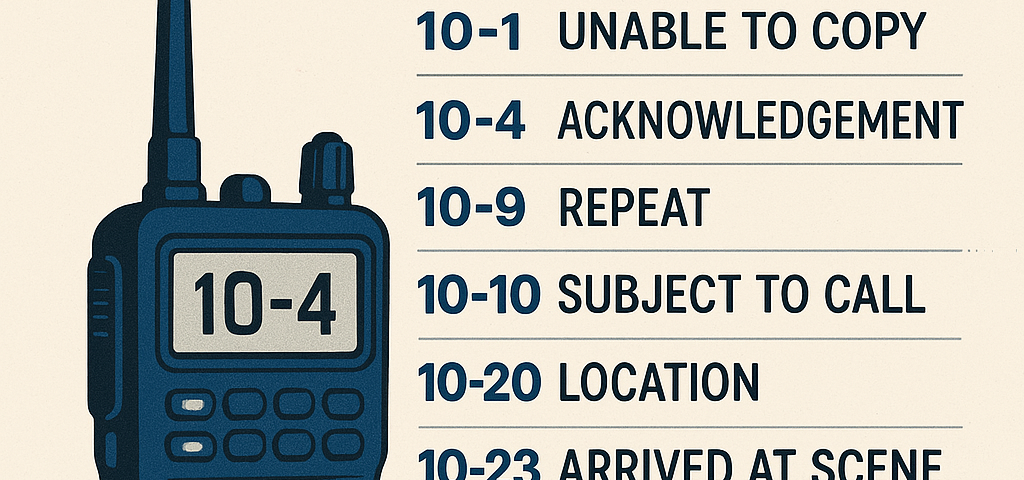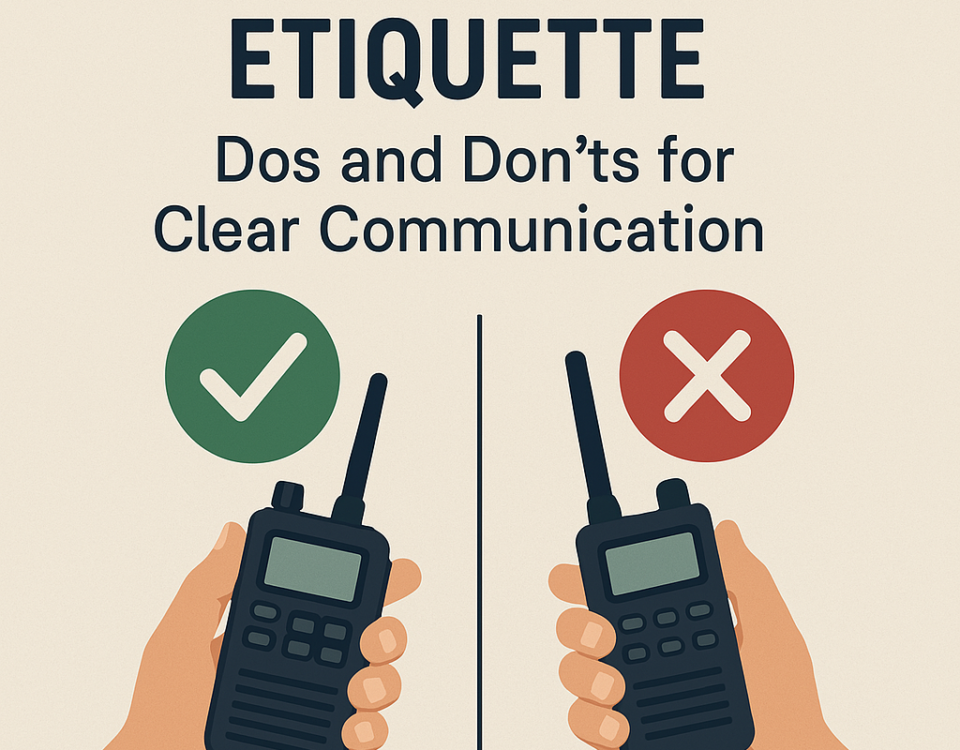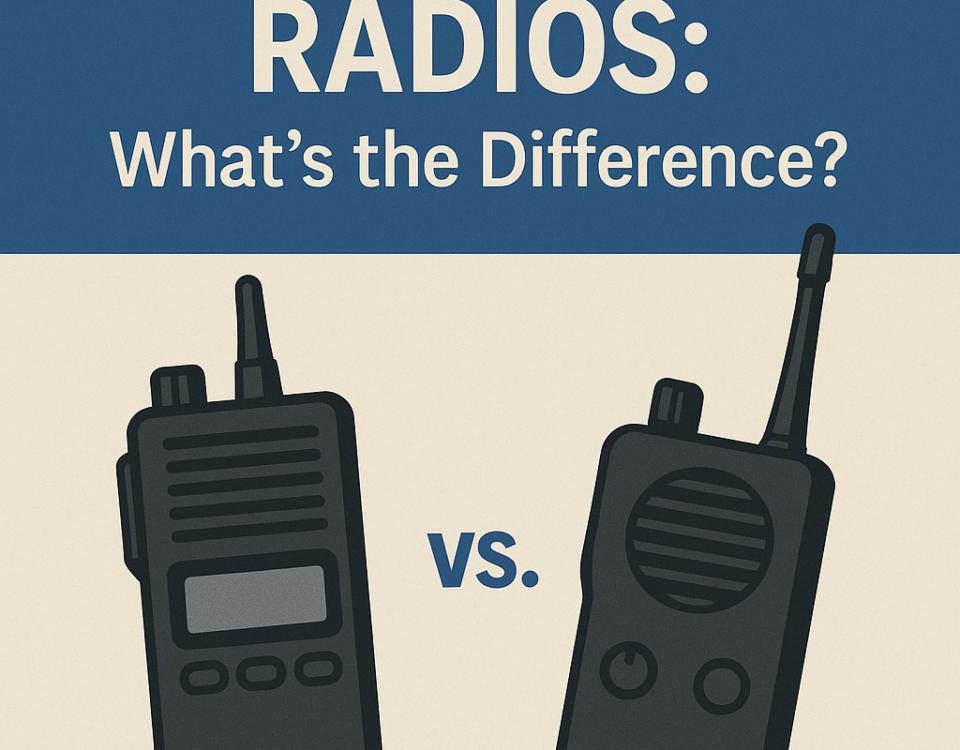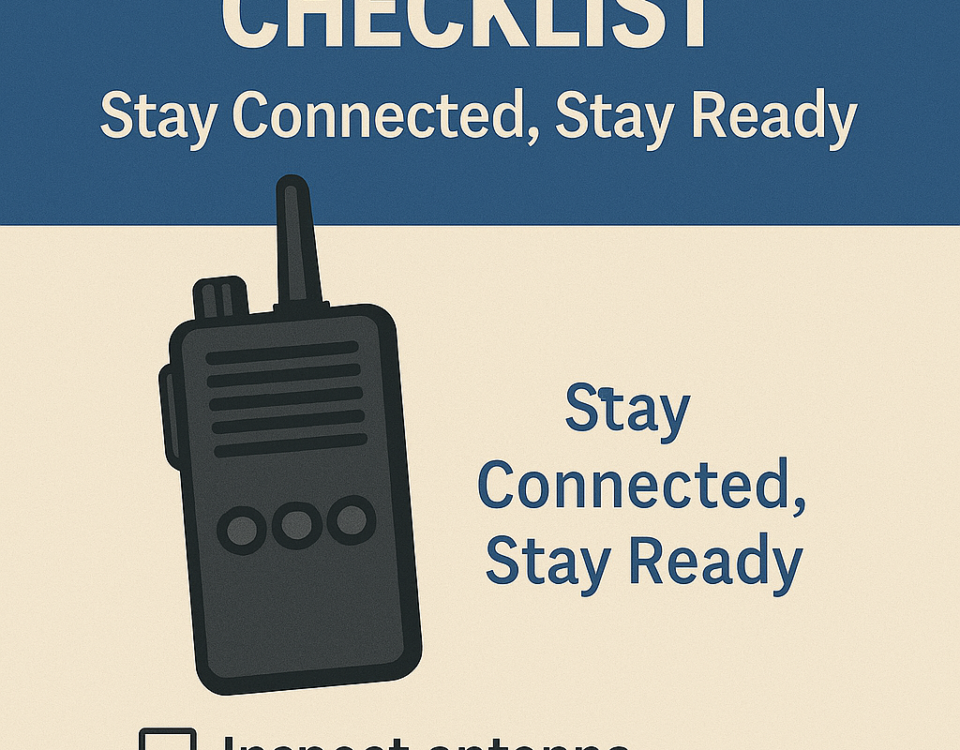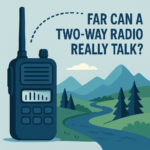
How Far Can a Two-Way Radio Really Talk?
March 31, 2025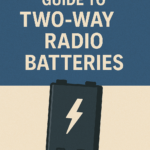
The Essential Guide to Two-Way Radio Batteries
March 31, 2025If you’ve ever heard “10-4” over a radio, you’ve already experienced 10-code communication in action. These short numeric codes simplify conversations, reduce radio traffic, and create consistency across teams.
At Safelight Communications Ltd, we encourage clients—especially those in security, transportation, and emergency services—to train their teams in proper radio protocol, including 10-codes.
🧾 What Are 10-Codes?
10-codes (also called ten signals) are radio shorthand developed to quickly relay common messages without long explanations.
Example:
- “10-4” means “Message received”
- “10-9” means “Repeat the message”
- “10-20” means “What’s your location?”
📋 Common 10-Codes You Should Know
| 10-Code | Meaning |
|---|---|
| 10-1 | Receiving poorly |
| 10-2 | Receiving well |
| 10-4 | Acknowledged |
| 10-7 | Out of service |
| 10-8 | In service |
| 10-9 | Repeat |
| 10-20 | What’s your location? |
| 10-22 | Report in person |
| 10-33 | Emergency traffic |
| 10-36 | Current time |
Note: Code meanings can vary slightly by industry. Be sure your entire team uses the same code set.
🎯 Why Use 10-Codes?
- Saves time: Less talk, more action
- Improves clarity: No misinterpretation in noisy environments
- Boosts professionalism: Teams sound trained and coordinated
- Reduces airtime clutter: Keeps messages short and focused
📚 Tips for Using 10-Codes Effectively
- Train your staff so everyone understands the same code list
- Use clear pronunciation, especially under stress
- Combine with standard radio etiquette (“Over,” “Roger,” etc.)
- Don’t overuse codes—use plain language where appropriate
🤝 Communication Made Easy
At Safelight Communications Ltd, we offer team training, custom cheat sheets, and ongoing support to ensure your radio users stay sharp and professional. Whether you need radios, accessories, or onboarding for your staff, we’re here to help.
📞 Contact us to upgrade your communications today.

